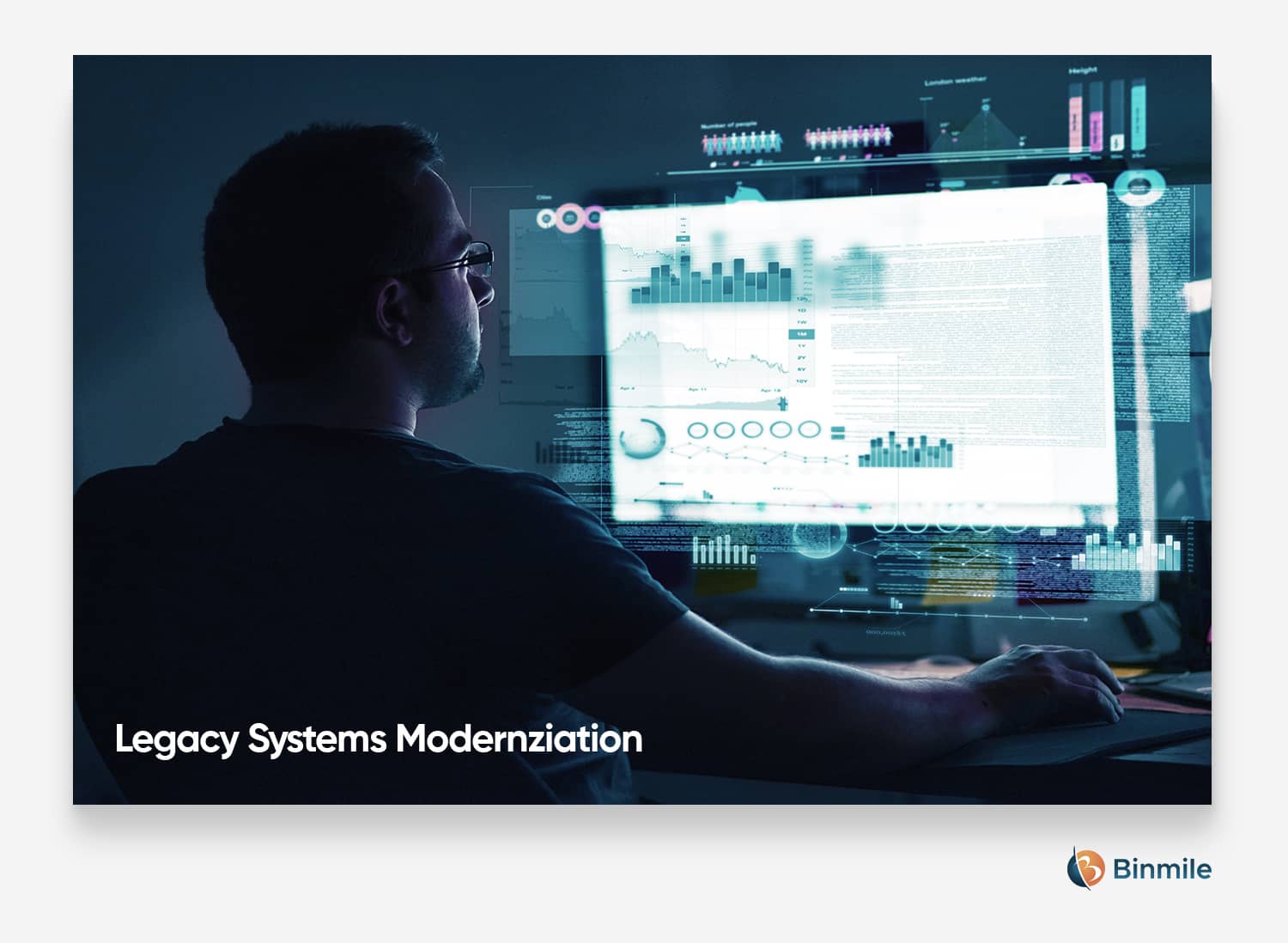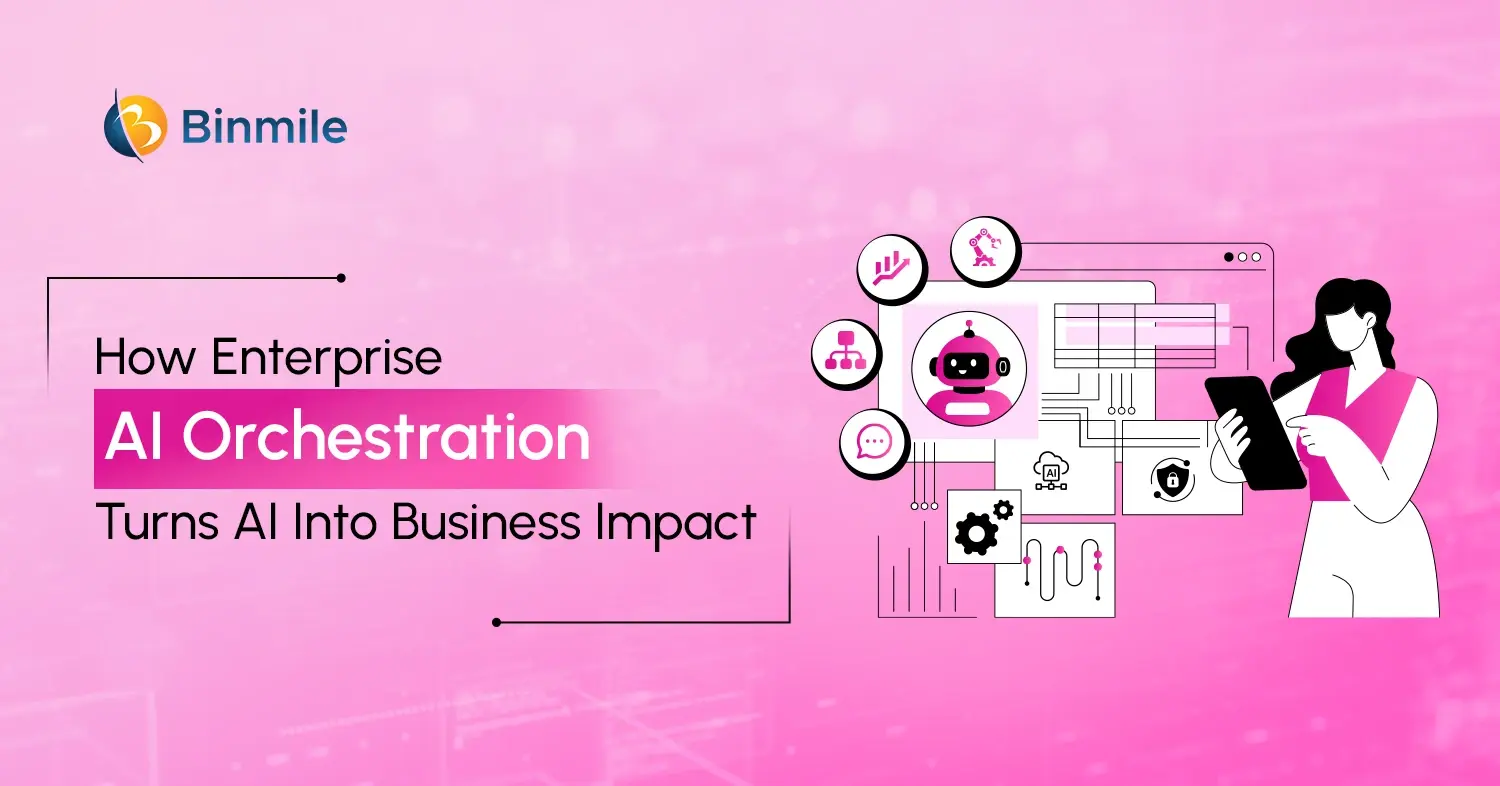Organizations are increasingly shifting to legacy system modernization to keep up with the ever-evolving business needs and edge out their competitors. To achieve this, they go through intense and complex processes that require careful planning, development, and testing. And more than often, it’s the software quality assurance part that gets lost in the process. The role of a Quality Analyst (QA) is crucial for the success of legacy modernization projects. Imagine them as the sentinels of quality, navigating the complexities of legacy systems to ensure a seamless transition into the digital era. From comprehensive assessments to strategic planning, meticulous testing, and safeguarding against risks, software testing experts are the architects of quality in this transformative journey.
Legacy application modernization is crucial because a failure to modernize IT systems means being unable to utilize the power of emerging technologies and bearing excessive costs. For instance, according to the US Government Accountability Office, the maintenance cost of legacy systems can reach up to 15%. Thus, businesses miss out on helping themselves in a competitive and resource-challenged environment with no way to innovate at low cost, maximum speed with optimum quality.
In this blog, we will explore how QAs can play a significant role in legacy enterprise modernization and understand how quality assurance experts shape the path to a modern, agile, and competitive enterprise.
Software Quality Assurance Role in Legacy Enterprise Modernization

Legacy systems are not completely redundant to an organization’s growth. However, these systems, while reliable, can be outdated, inflexible, and pose security risks. Modernization aims to bring them up to speed with current technology standards, making them more efficient, secure, and aligned with business objectives.
Deep Dive into the Assessment of Legacy Systems
At the outset of a legacy system modernization project, the QA’s role is to conduct a comprehensive assessment of the existing legacy systems. They need to gain a holistic understanding of the system’s intricacies, identifying its strengths, weaknesses, and areas that require attention. This is done to evaluate the technology stack, looking for signs of obsolescence, performance bottlenecks, and security vulnerabilities. It also includes a risk analysis, where the QA identifies potential challenges and threats associated with the modernization process, such as data loss, downtime, or compatibility issues.
This helps them get the insights necessary to lay the foundation for the subsequent phases of the modernization project.
Develop a Robust Modernization Strategy
QA needs to collaborate with other project stakeholders to create a solid modernization strategy. This is done to outline the project’s goals, scope, and approach. It is a collaborative effort that involves IT teams, business analysts, project managers, and other relevant parties. The QA plays a key role in defining the scope of the project, and determining which components of the legacy system will be modernized, replaced, or integrated with new solutions. Additionally, they contribute to resource allocation, helping decide the human, financial, and technical resources required for successful execution.
Setting a clear timeline with milestones and deliverables is another critical aspect of strategy development for a successful legacy software modernization. This timeline ensures that progress can be tracked effectively throughout the project’s lifecycle.
Setting Clear Objectives and KPIs
A crucial function of the QA is to ensure that the objectives of the modernization project align with the broader business goals of the organization. Whether the objective is to improve efficiency, reduce operational costs, enhance customer experience, or achieve other strategic outcomes, the QA ensures that these objectives are well-defined and articulated. Additionally, they actively participate in defining Key Performance Indicators (KPIs) that will be used to measure the success of the modernization effort.
Establishing clear objectives and KPIs ensures that the project remains focused on delivering tangible business benefits with high software quality services. These KPIs could encompass a wide range of metrics, including system performance, user satisfaction, operational efficiency, and more.
Facilitate Flexible, Collaborative, & Iterative Development
QAs must actively participate in Agile processes, contributing to sprint planning, backlog grooming, and daily stand-up meetings. They should offer continuous feedback on the quality of the evolving system, helping the team make informed decisions about priorities and adjustments. Agile methodologies enable rapid responses to changing requirements and ensure that the modernization project remains aligned with evolving business needs. Throughout the digital product development phase, QAs meticulously conduct, track, and manage defects, working closely with developers to ensure that identified issues are resolved promptly.
Since they’re close to users and are thus in a better position to find various ways products can be improved that might have otherwise been missed. Their role in maintaining the quality and reliability of the evolving system cannot be overstated.
Strive for Preventing Potential Delays or Disruptions
Throughout the modernization project, the QA plays a crucial role in continuous monitoring. They track progress, quality, and security against the set KPIs, often utilizing dashboards and reports to provide visibility into the project’s health. Any deviations from the project plan or unexpected issues are promptly identified.
This early identification allows for swift corrective actions. Continuous monitoring ensures that the project remains on course and that the defined objectives are being met effectively.
Choose the Right Framework for Automation
To streamline the testing process and maintain consistency, QAs must introduce test automation services into the legacy software modernization project. This involves selecting appropriate test automation tools and frameworks that align with the project’s needs and technology stack. QAs are responsible for developing automated test scripts that can be executed consistently to ensure thorough testing and regression testing as new code is introduced.
If QAs take up the charge or participate in selecting quality assurance services, tools, and frameworks, they not only avoid the situation of running flaky end-to-end tests to save time but also compromise the quality and security of the software product.
Also Read: Data Modernization Strategy for BFSI
Software Assurance Quality Expert Tips to Modernize Legacy Systems Like A Pro!

Modernizing legacy systems can be a daunting endeavor. These systems, often built on outdated technologies and architectures, present several challenges. Compatibility issues with newer software, data migration complexities, and the risk of disrupting critical business processes are common hurdles. Moreover, legacy systems might lack documentation, making it difficult to understand their intricacies.
Additionally ensuring data security and regulatory compliance during the transition can be complex.
Overcoming these challenges requires a well-planned strategy and competent quality assurance services. QAs can play a crucial role in delivering higher quality applications, faster legacy system retirement and boost end-user experience.
- Incremental Approach: Adopt an incremental modernization approach. Instead of a complete overhaul, gradually update components while keeping essential functions intact. This minimizes disruption and risk.
- Parallel Systems: Create parallel systems where possible. Keep the legacy system running alongside the modernized one temporarily. This allows for a smooth transition and fallback if issues arise.
- Data Migration Strategy: Develop a robust data migration strategy. Ensure data integrity during the transfer, validate data consistency, and maintain backups to mitigate potential data loss.
- Testing and QA: Before implementing changes, thoroughly test them in a controlled environment to identify and resolve issues proactively. So, rigorous and AI-powered test automation is vital for simplifying testing efforts and reducing testing time.
- User Training and Support: Invest in user training and provide robust support during the transition. This helps users adapt to the changes and ensures uninterrupted business operations with your business leveraging the power of modernization of legacy systems.
Free Download: Case Study on Application Modernization Services
Embrace the Future With Software Quality Assurance!
As businesses navigate the complex terrain of legacy systems, let us remember that the QA’s role is pivotal, and their contributions are central to ensuring a successful, secure, and efficient modernization journey. No doubt, organizations modernize legacy systems to improve the performance and quality of their technology. It is incomplete without an active role of QAs. Their meticulous assessments, strategic insights, testing expertise, and commitment to quality ensure that the legacy enterprise modernization process isn’t just a shift in technology but a transformation that aligns with the organization’s goals and aspirations.
Through collaboration, expertise, and unwavering dedication, QAs enable businesses to evolve, adapt, and thrive in the digital age. Therefore, by collaborating with QAs and emphasizing quality at every stage, organizations can modernize their systems, optimize operations, and remain competitive in an ever-evolving business environment.









